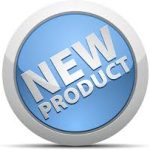Improving S&OP with Forecasting Analytics & Business Intelligence
 Sales and operations planning (S&OP) is a consensus-based communications process that provides insight and control over a company’s supply chain decisions. While a manufacturing organization can have an S&OP process in place, though, it can still have issues aligning demand and supply effectively.
Sales and operations planning (S&OP) is a consensus-based communications process that provides insight and control over a company’s supply chain decisions. While a manufacturing organization can have an S&OP process in place, though, it can still have issues aligning demand and supply effectively.
Advanced forecasting technologies and processes are needed to improve that alignment. This article quickly explores those technologies and describes how they can improve S&OP outcomes.
The Value of Forecasting Analytics
(aka Predictive Analytics)
A demand forecast is a key component of the S&OP process with the ability to predict future requirements with a reasonable degree of accuracy. Unfortunately, seasonality, promotions and unexpected spikes in demand are difficult to forecast with precision when based primarily on human input. Even when historical patterns are consistent, forecasts created by human input (or gut feel) can be inaccurate.
The creation of an unconstrained forecast should be based on a statistical analysis of time series historical data. This is where predictive analytics (or forecasting analytics) comes into play. Predictive analytics uses historical data to forecast potential scenarios that can help drive strategic decisions. Using predictive analytics, a forecast baseline can be established that provides the necessary means to initiate fact-based discussions during the S&OP process.
There are a myriad of forecasting products on the market today. The selection of an integrated forecasting and analytical solution should be made by paying careful attention to functionality that enhances the overall effectiveness of sales and operations planning. Here are just a handful of characteristics that a viable software solution should offer:
- Advanced analytics with optimized model selection
- Scalability
- Reduced forecast cycle times
- Exception-based forecasting
- The ability to support collaborative planning
It’s important to note that an automated forecasting / predictive analytics solution can significantly improve S&OP cycle times. This is particularly true when a business is constrained by a short forecasting cycle and the ability to quickly create demand forecasts, identify exceptions and make recommendations for change becomes a necessity.
Supporting New Product Forecasting, Too
New product forecasting can also benefit from predictive analytics by providing better information to forecasters responsible for developing new product demand curves. This is possible by basing new product introductions on the evaluation of historical sales data related to “like products.”
Also having the ability to perform a more detailed analysis of key factors like target markets, product functionality, demographics and promotions and discounts can provide additional insight into establishing demand profiles. Then such demand profiles can be applied to a new product forecast with greater confidence level since the forecast is supported by the data.
At the bottom line, automation and forecasting analytics can provide the best level of prediction with a lower degree of risk. The ability to review forecasts by exception using filters and customized list views can help demand planners manage their plans in a more effective and timely fashion. Adjustments can be made quickly to problematic and high-value forecasts while adhering to the S&OP timeline. This results in a more dynamic planning process and detailed evaluation of supply chain drivers as they relate to demand, production and inventory management.
Leveraging S&OP with Business Intelligence
Driving S&OP activity throughout an organization can be greatly enhanced by using a business intelligence (BI) solution, as well. Some of these solutions (like Silvon Stratum) can consolidate and organize data from every corner of the enterprise and make that data available to every group participating in the S&OP process in a format that supports their specific reporting and analysis requirements.
Business Intelligence solutions deliver the insight, reporting capabilities and drill-down analysis needed to support the sales and operations planning process. The business intelligence platform that supports the S&OP process should have the following capabilities:
- Portals and dashboards

- On-line data analysis
- Advanced data exploration
- Report creation (both recurring and ad hoc reports)
- Report broadcasting (scheduled distribution)
- Built-in exception management
- Automated alerting
- Microsoft Office integration (Excel and Power BI)
A dashboard provides participants in the S&OP process with easy access to specific data and reports that need to be reviewed and evaluated. Advanced functionality such as the ability to drill down on important data elements enables users to perform a more detailed analysis of key business drivers. BI reporting should support the evaluation of specific S&OP metrics like forecast accuracy, forecast volatility, demand consumption, and various supply chain and inventory management liabilities.
Investing in the Right Technology
No sales and operations planning initiative can deliver results without full visibility into your company’s data streams. Having access to a single version of the truth in the form of both historical and real-time data spanning the enterprise is essential, together with collaborative planning capabilities.
A comprehensive S&OP process effectively merges predictive analytics and business intelligence with an organization’s consensus-based planning process. The right blend of human and artificial intelligence can boost an organization’s confidence in assessing situations quickly and making decisive moves. You need to implement a technology platform where you can build collaborative plans, increase the transparency of information, and seamlessly connect with key stakeholders to improve your supply chain visibility.
Improving S&OP using business intelligence and advanced forecasting analytics provides a competitive advantage in these ways:
- Advanced analytics drive the S&OP process via model optimization, event planning, and high scalability.
- The automation of forecasting tasks improves S&OP process flow and reduces forecast cycle time. This gives you more time to analyze inaccurate forecasts, react to trends and make recommendations for change.
- The business analytics framework provides the necessary means to collect and deliver information using portals, dashboards, data exploration, consensus planning, and corporate-wide data consolidation. Additional integrations with tools like Excel and Power BI provide the added ability to visualize important KPIs and other metrics and to easily transfer data between spreadsheets and the business intelligence platform for planning, analysis and reporting.
While not all-inclusive, we hope the technologies and processes covered in this article are helpful to you in your quest to improve your organization’s S&OP initiatives. Keep on the lookout for our future articles on this topic and on technologies and best practices related to sales and operations performance management.